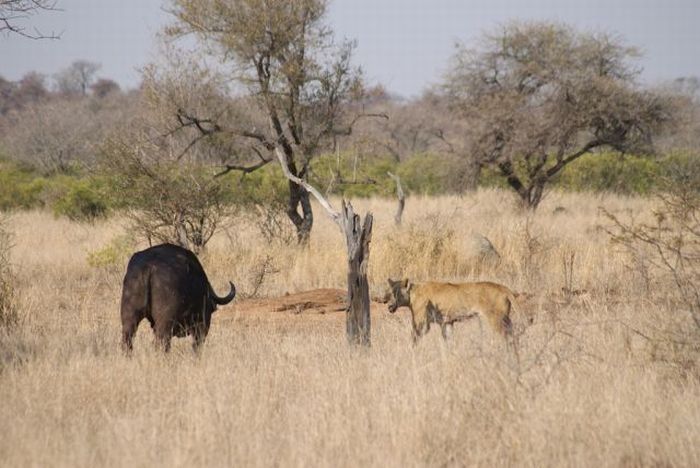|
|
Lioness Against A Buffalo
|
It is not closely related to the slightly larger wild Asian water buffalo, but its ancestry remains unclear. The African buffalo is not the ancestor of domestic cattle, and is only distantly related to other larger bovines. Owing to its unpredictable nature, which makes it highly dangerous to humans, the African buffalo has never been domesticated unlike its Asian counterpart, the Asian buffalo.
Description
The African buffalo is a very robust species. Its shoulder height can range from 1 to 1.7 m (3.3 to 5.6 ft) and its head-and-body length can range from 1.7 to 3.4 m (5.6 to 11 ft). Compared with other large bovids, it has a long but stocky body (the body length can exceed the wild water buffalo, which is rather heavier and taller) and short but thickset legs, resulting in a relatively short standing height. The tail can range from 70 to 110 cm (28 to 43 in) long. Savannah-type buffaloes weigh 500 to 900 kg (1,100 to 2,000 lb), with males normally larger than females, reaching the upper weight range. In comparison, forest-type buffaloes, at 250 to 450 kg (600 to 1,000 lb), are only half that size. Its head is carried low; its top is located below the backline. The front hooves of the buffalo are wider than the rear, which is associated with the need to support the weight of the front part of the body, which is heavier and more powerful than the back.
|
|









